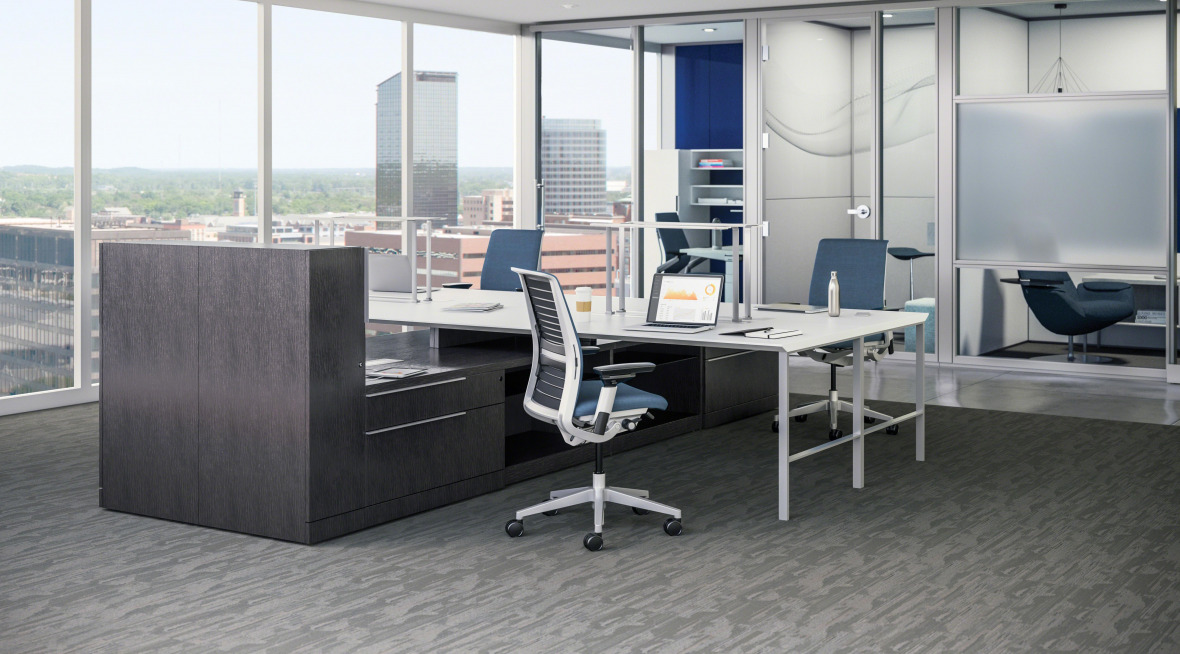We use cookies to maximize your online experience with us. By closing this window, you consent to our cookie policy. You can change your cookie settings in your browser any time. For more information, please see our Privacy Policy located on the footer of this site.
The Death of the Cubicle

In today’s world of remote workers, flexible space needs and the need for collaboration, office space no longer resembles a scene from “Mad Men” with private offices, nor is it a sea of cubicles as was the trend in the 1990s and early 2000s. Businesses today need office space to be efficient, multitasking work areas with an eye towards maximizing productivity.
So what does that mean exactly? UBJ asked six Upstate experts to give us an inside look at the latest trends, what’s in (and what’s out) and the story that today’s office tells us.
K.J. Jacobs: One of the biggest trends is the shift to smaller individual workspaces. Both private offices and open office cubicles are being reduced in size to make room for a greater variety of collaboration spaces. Phone booths as small as 4 by 6 feet provide space for employees to make calls or quiet space for uninterrupted work. Slightly larger rooms serve as two- to four-person “war rooms” while midsize and larger conference rooms are still in high demand. Even leftover spaces such as the end of a corridor are now being converted to informal gathering spaces.
Scott Powell: Office design today is all about collaboration and connectivity. Businesses today have realized that employees learn from each other. Rather than dictating that employees sit in offices or cubicles, wireless technology allows employees to work wherever they wish.Casual seating areas and break areas have proven to be popular areas for employees to work. Comfortable chairs with tablets or café tables have become common.
Jessica Burgess: The biggest office trend right now is making the office feel more residential and comfortable. Flexibility is a key factor in design. Multiple styles in the workplace support each generation’s preferences in how to work. You will see everything from height-adjustable work surfaces to sofas and coffee bars.
Whitney Swafford: Flexibility with adaptable spaces that can change as needed, such as movable walls and modular furniture. Adjustability for individual comfort, supporting different postures such as ergonomic seating, adjustable-height work surfaces and lighting control are also highly requested. Integrated technology to make it easier for employees to share information and collaboration spaces are also in demand.
Sandy Gibbs: Authentic collaboration is a recent trend. An open concept is often talked about, but rarely achieved – the office is only as good as the culture in which it exists. If you want to see a good open concept, go to any architectural school in the country. You’ll see students laughing together yet diligently working together in achieving great things – at all hours. But there is joy in it. I think that is a good way to put it. We are seeing trends that are trying to implement joy back into the workplace.
Alison Hollstegge: Despite the alternatives, the office is still the home base for productive work and collaboration. Design trends are responding to this research by creating spaces that give employees choices: outdoor spaces, coffee bars, telephone booths, gaming areas, standing height work areas and more. Empowered by choice, individuals are writing their own script on how they want to work.
Shannon Sowers: Companies are faced with the task of finding and retaining the best talent. There has been a shift to where it is an employee’s market. Technology has allowed us to keep flexible work hours; work now happens around the clock. If management wants to attract the best in the industry, they will have to offer a space that supports technology and encourages engagement and communication. We are seeing more collaborative lounge spaces and relaxing “Starbucks” environments in an effort to keep employees inspired and engaged.
To read the entire article, click here!
